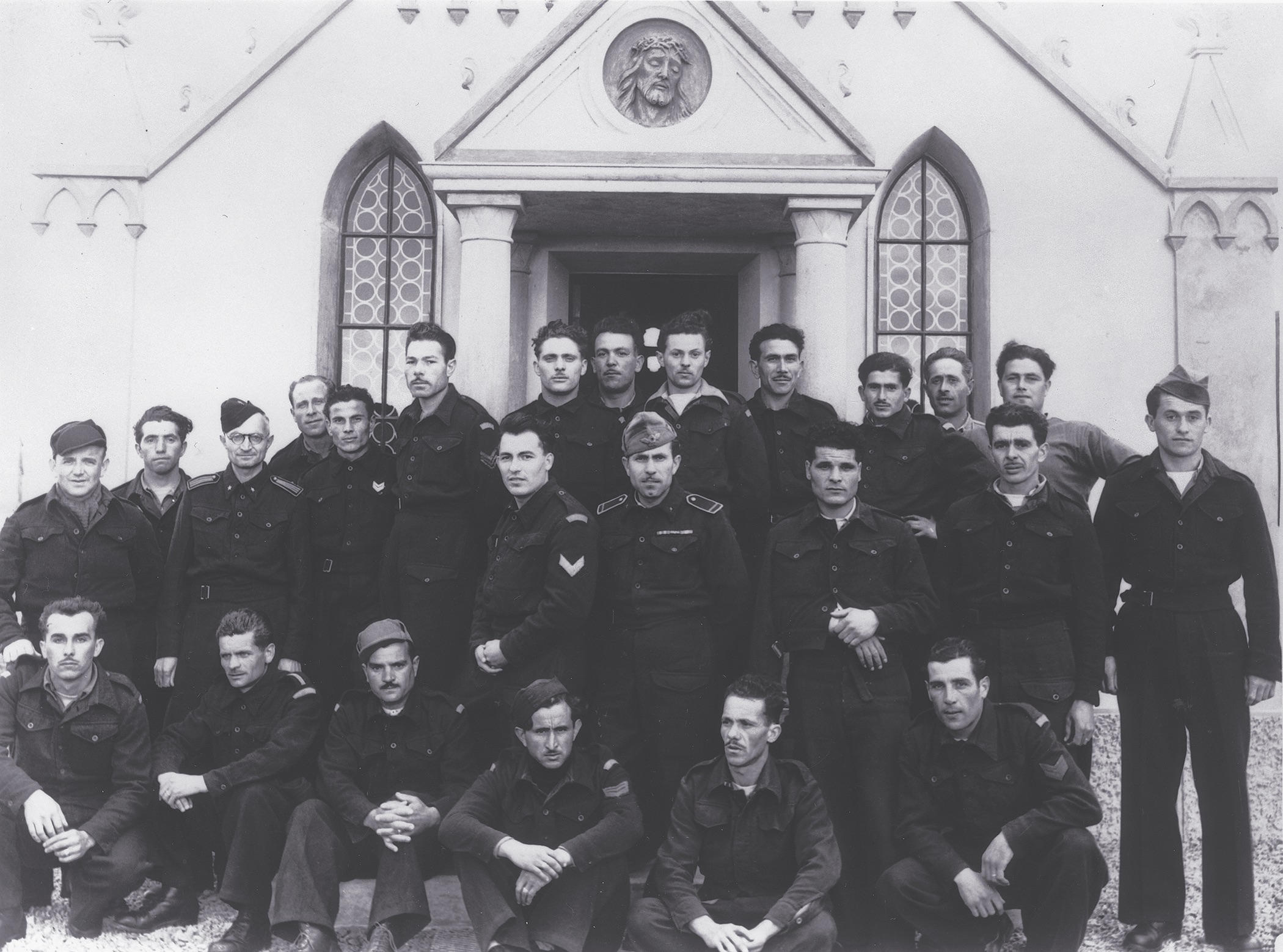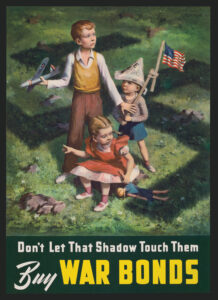In 1943 some Italian prisoners of war on Scotland’s Orkney Islands decided to convert a pair of steel huts into their own place of worship.
GINO CAPRARA WIPED THE SWEAT FROM HIS BROW AND PUSHED HIS OLD BICYCLE through the gates of the camp on the tiny, sparsely inhabited Orkney island of Lamb Holm that had been his prison and his home for the past two and a half years. His fellow prisoners—all of them, like Caprara, Italian soldiers captured in the early years of World War II—ran out to meet him. They were eager to find out what success he’d had selling their wares to local islanders.
To make a bit of pocket money, the Italian POWs had crafted things from scrounged materials and then pedaled across a causeway to the mainland to sell them to the locals—brass cigarette lighters, aluminum cigarette cases decorated with sailing ships and beautiful women, wooden roll-top cigarette boxes in the shape of cars, and rings, pendants, and assorted pieces of jewelry.
Inside the camp another prisoner was overseeing the construction of something much, much larger. Domenico Chiocchetti, an artist
by trade, smiled and took a step back from his work, admiring the serene face of his Madonna as she cradles the Christ Child on her lap. This would be his masterpiece, a treasure of outstanding beauty and inspiration. He and his friends were building an exquisite chapel almost entirely from scraps. Chiocchetti, knowing that he would soon be moved to England for the duration of the war, intended to leave a lasting monument to peace behind.
THE ITALIANS ARRIVED IN THE ORKNEY ISLANDS, off the northernmost tip of Scotland, in January 1942. They had been sent to such a faraway location because the Royal Navy’s northern base was at Scapa Flow. Its defenses were found wanting in the opening months of World War II when the German submarine U-47 penetrated the harbor and sank the old battleship HMS Royal Oak, killing 834 sailors (the youngest just 14 years old). Winston Churchill, who was then First Lord of the Admiralty, immediately ordered the building of permanent barriers to close the four channels that lead into Scapa Flow from the east. (For that reason they soon would become known as the Churchill Barriers.)
With able-bodied men in short supply during the war, the British government decided to bring in POWs to build the barriers that would close the channels. Some 1,000 Italians captured in North Africa were taken from Egypt via the Suez Canal, around Africa, and deposited in Liverpool, England. From there they traveled by train to Edinburgh, Scotland, and on to Aberdeen, where a requisitioned steamer, escorted by a destroyer, carried the prisoners to their final destination: the cold and windswept islands of Orkney. Locals remembered the captured soldiers, unaccustomed to such bitter cold, shivering as they marched to their camp. Some were heard to shout “Viva il Duce!”
One group of POWs was sent to Camp 34 on the island of Burray; the other went to Camp 60 on the island of Lamb Holm. “The little island could hardly have appeared more desolate: bare, foggy, exposed to the wind and heavy rain,” Chiocchetti would later write of Lamb Holm. “The camp consisted of thirteen dark, empty huts, and mud. In a very short time the prisoners had transformed Camp No. 60 into a garden with flower beds and cement paths.”
Though the men found time to create art and entertain themselves during their captivity—they built a little theater in the camp, with Chiocchetti designing and painting the scenery for each production—they did plenty of backbreaking work. Orkney’s harsh climate and the short hours of daylight in the winter made the building of what would become known as the Churchill Barriers all the more challenging and difficult.
To form the core of the barriers, the Italian prisoners quarried rock that would be loaded into wire bags and dropped into position from an overhead cable-way called a blondin (after “the Great Blondin,” a French tightrope walker and acrobat). Concrete blocks were then laid over the rocks randomly, as this was found to best mitigate the destructive force of the pounding sea.
When the POWs discovered that their work was contributing to the British war effort, in contravention of the Geneva Convention, they went on strike. The situation was tense until a delegation from the Orkney County Council lied to the men, saying that they weren’t building barriers to keep out U-boats but “causeways” to help the local population.
FOR MORE THAN A YEAR, AS THEY WORKED ON THE BARRIERS, the Italian POWs were not permitted to leave the camps. But in September 1943, after Italian dictator Benito Mussolini was deposed and imprisoned and an armistice with the Allies went into effect, the British War Office gave the prisoners a choice: Those who wished to stay and keep working on the barriers would be paid in pounds sterling rather than tokens that could only be spent in the camp’s commissary; those who did not want to stay would be sent to a POW camp in England. Some of the men left, denouncing as traitors those who remained.
The Italians now had limited freedom and could leave the camp, as long as they kept within a five-mile radius, but they weren’t allowed to drink alcohol or fraternize with women. Some were sent to work on farms and became friends with the locals.
Then came an event that would change everything. A Catholic priest, Father Gioacchino Giacobazzi, arrived at Camp 60 as the war continued to rage in Italy, with Nazi Germany fiercely holding on to most of the country. Giacobazzi was also a POW. Captured by Allied forces while serving as an Italian army chaplain in East Africa, he’d been sent to Orkney as part of a British government program to provide priests for Italian POW camps.
Giacobazzi, working with Major Thomas Pyres Buckland, the camp’s new commandant, set in motion plans for a place of worship. “At first Padre Giacobazzi used to celebrate Mass on a table in the mess,” Chiocchetti later recalled. “When I was talking to him one day I suddenly had the idea of the church.” Giacobazzi then spoke with Buckland, who, in his halting Italian, told the prisoner and the priest that they could build some sort of chapel. “He slapped me on the back and said, ‘Bravo! Make a good job of it,’ ” Chiocchetti later recalled. “That was how the work started.”
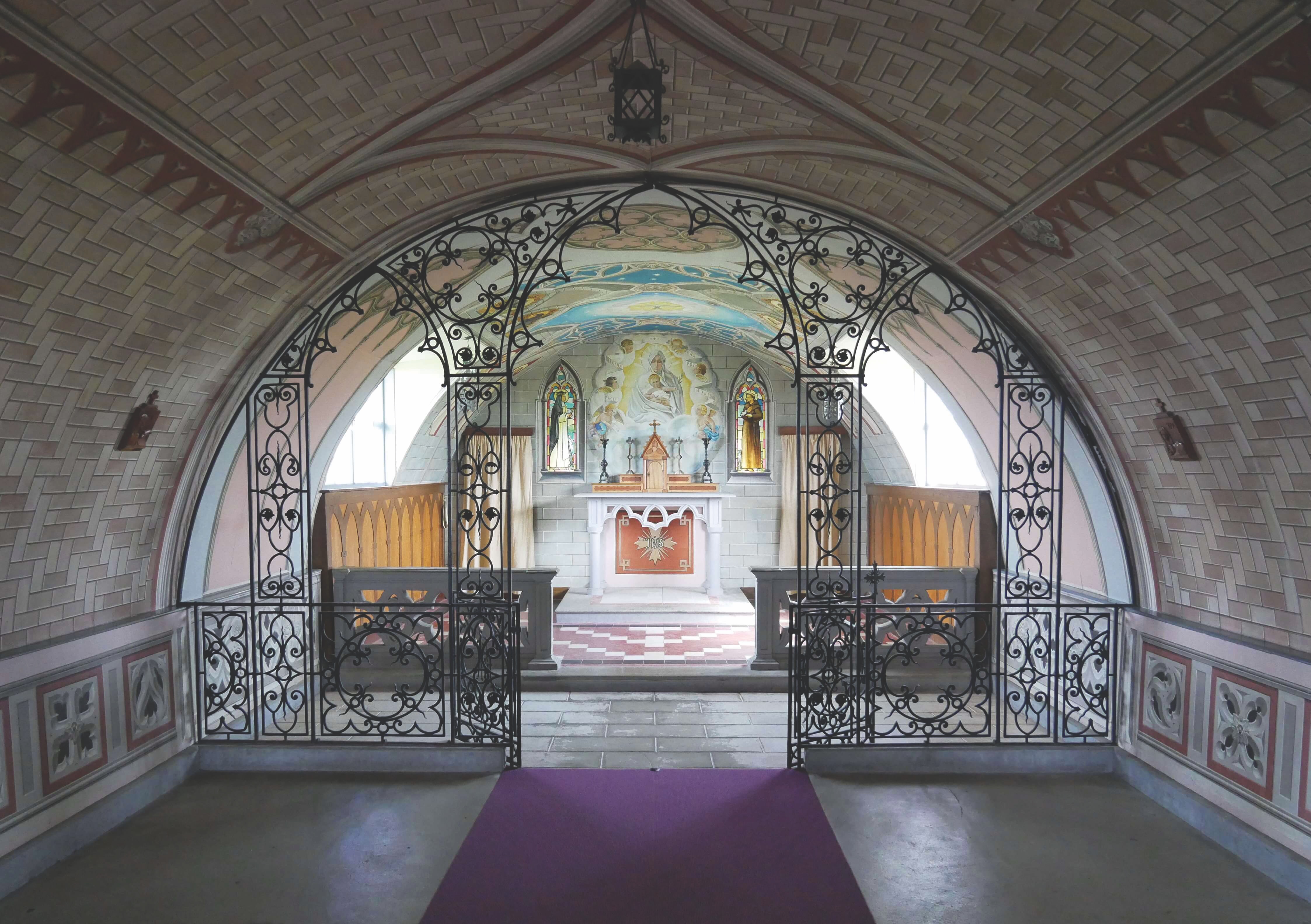
The chapel had its origins in a couple of corrugated steel Nissen huts. (Designed during World War I by Major Peter Norman Nissen, an engineer and inventor, the prefabricated structures were used extensively in World War II as barracks, hospitals, and utility buildings.) One was originally meant to be the chapel and the other a school, since some of the men were illiterate. But the men pleaded to use both huts for the chapel, arguing that they could do their schoolwork elsewhere, and Buckland agreed.
Chiocchetti described what happened next. “With the commandant’s permission I chose my workers: Domenico Bruttapasta, cement worker; Palumbi, a smith; Primavero and Micheloni, electricians; Devitto and several others. With some difficulty we acquired clay from which I made the altar pillars, the altar rail, and the holy water stoop decorated with three angels’ heads. I cast them first in chalk and molded them in cement.”
The huts were bolted together to make one long structure and sheathed in concrete, which was reinforced with wire mesh. A contractor donated a dump truck load of concrete to the project every day. Chiocchetti, aiming to hide the outline of the Nissen hut (which he considered ugly) and its plain red-brick front, designed a façade more in keeping with his vision. His friend and fellow artist, Giovanni Pennisi, created a circular image in clay portraying the head of a suffering Christ with a crown of thorns.
Chiocchetti’s masterpiece was to be his altar painting of the Madonna and child, inspired by a prayer card that his mother had given him when he was called up for military service. “The war was still going on and naturally the motif which inspired me was peace,” he later recalled. “On the left an angel held in his hand the heraldic badge of Moena—a man rowing his boat out of the storm towards the calm sea. On the right another angel was sheathing his sword.”
Chiocchetti also recalled the contributions of his fellow prisoners: “Palumbi, the smith, working to my design, made two candelabra in wrought iron and a beautifully made altar gate. Sergeant Primavera made two candelabra from brass obtained from the stairs of a wrecked ship. The bottom of the sea provided us with much of the iron that we used and with the wood for the tabernacle and the stones for the floor. There were no divers among us that I remember, [so] we used to go down to the ships at low tide.” (Here Chiocchetti referred to old ships the British had deliberately sunk to block the channels before the barriers were built.)
The men ingeniously repurposed all kinds of materials for the interior of the chapel. They laid tiles salvaged from one of the sunken ships around the altar and made lampshades from bully beef tins. Chiocchetti painted two windows, representing Saint Catherine of Siena and Saint Francis of Assisi, to look like stained glass and used generator-powered lights behind them to lend the effect of sunlight streaming into the chapel. The men even managed to add to the hallowed atmosphere by acquiring a gramophone and a record of the bells of St. Peter’s Basilica.
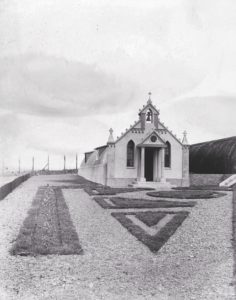
AFTER THE WAR THE LAND ON WHICH THE ITALIAN CHAPEL WAS BUILT was returned to its original owner and the buildings on it slated for demolition. The man in charge of the demolition, however, couldn’t bring himself to destroy the chapel or Chiocchetti’s statue of St. George and the dragon, which he had designed to show the patron saint of soldiers defeating a symbol of war. But in the ensuing decades, the door of the neglected chapel eventually gave way. Grazing sheep, finding shelter inside, erased the lower part of the painted walls by rubbing against them with their woolly coats. The floor was piled with their droppings.
In 1959 the BBC took an interest in the chapel and broadcast a radio program about it throughout Italy. The following year the BBC arranged to fly Chiocchetti from his hometown of Moena in northeastern Italy to Orkney, where he restored his paintwork in the chapel. He visited Orkney twice again, bringing his wife with him in 1964 and two of his children with him on a final trip in 1970. He died in Italy in 1999.
The Churchill Barriers remain a monument to the strategic importance of the naval base at Scapa Flow during World War II and a testament to wartime ingenuity. By linking the islands of Burray and South Ronaldsay to the Mainland, Orkney’s main island, the four causeways have permanently transformed life on the islands, boosting local economies and facilitating tourism.
The Italian Chapel, now cared for by a preservation committee, is one of the most popular tourist attractions on the islands. Visitors are moved by the story behind the chapel, perhaps because the Italian POWs managed to create a thing of grace and beauty from the scraps and horrors of war. This symbol of peace between onetime adversaries in war stands as a lasting lesson to us all. MHQ
Tom Muir is a historian and author in Orkney, Scotland. He and his wife, Rhonda, curate Orkneyology.com.
[hr]
This article appears in the Summer 2019 issue (Vol. 31, No. 4) of MHQ—The Quarterly Journal of Military History with the headline: Behind the Lines | Act of Faith
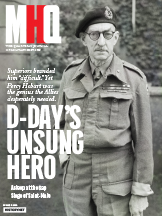
Want to have the lavishly illustrated, premium-quality print edition of MHQ delivered directly to you four times a year? Subscribe now at special savings!

